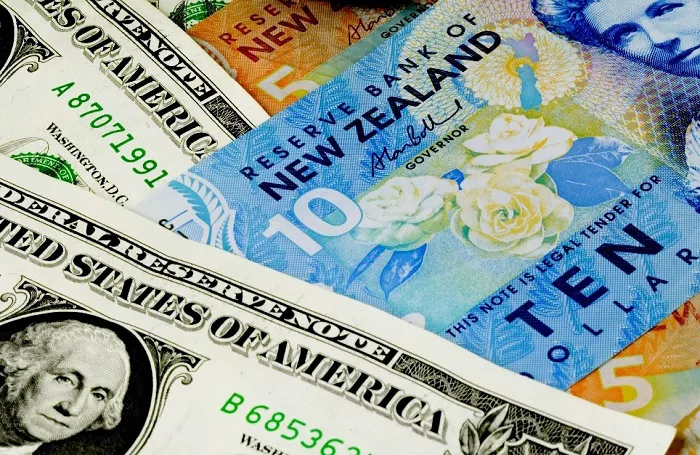In the Asian trading session on Friday, the NZD/USD currency pair showed resilience, holding above the 0.5750 mark and reaching as high as 0.5800, eventually trading near 0.5770. This upward movement was primarily driven by the broad weakness of the US Dollar (USD). Escalating tariff tensions between the US and China had stoked persistent economic concerns, which in turn led to a decline in the USD’s value. This provided a favorable backdrop for the NZD/USD pair to gain ground.
US-China Trade Tensions Roil the Markets
The trade conflict between the US and China continued to be a major market – moving factor. On Wednesday, the Trump administration took a somewhat contradictory stance. While announcing a 90 – day pause on tariffs for all countries except China, President Trump further complicated matters. Early Thursday, he stated that China faced a tariff rate of 145%, clarifying that an existing 20% levy over fentanyl was also part of the equation. These tariff threats not only stoked fears of a global recession but also contributed to trade war jitters. The resulting uncertainty undermined the US Dollar, effectively acting as a tailwind for the NZD/USD pair.
RBNZ’s Policy and the NZD’s Outlook
On the New Zealand front, the Reserve Bank of New Zealand (RBNZ) played a significant role in shaping the NZD’s prospects. At its April meeting on Wednesday, the RBNZ cut its benchmark interest rate by 25 basis points (bps). This decision came in response to a steady decline in inflation and weakening domestic economic conditions. Analysts, however, expect the RBNZ to implement an even deeper cut of 50 bps in the future. Market expectations suggest that there could be up to 100 bps of further easing by 2025. While lower interest rates are generally aimed at stimulating the economy, they can also cap the upside potential for the New Zealand Dollar (NZD) in the near term.
Key Drivers of the New Zealand Dollar
Economic Ties with China
The New Zealand Dollar, often referred to as the Kiwi, is significantly influenced by the health of the Chinese economy. China is New Zealand’s largest trading partner, and any developments in China can have a direct impact on New Zealand’s exports. For instance, bad economic news from China could mean reduced demand for New Zealand’s goods, particularly in sectors like dairy. This would hit New Zealand’s export revenue and, consequently, weaken the Kiwi.
Dairy Prices: A Commodity – Driven Factor
Dairy prices are another crucial determinant of the NZD’s value. The dairy industry is a major export sector for New Zealand. When dairy prices are high, it boosts the country’s export income, contributing positively to the economy. This, in turn, has a positive effect on the New Zealand Dollar. Conversely, a decline in dairy prices can put downward pressure on the currency.
RBNZ’s Monetary Policy
The RBNZ’s decisions regarding interest rates are central to the NZD’s valuation. The bank aims to keep inflation between 1% and 3%, with a target of around 2%. When inflation is high, the RBNZ may increase interest rates. This not only cools the economy but also makes New Zealand’s bonds more attractive to investors, leading to an influx of investment and a stronger NZD. Conversely, lower interest rates tend to weaken the currency. The difference between New Zealand’s interest rates and those of other major economies, especially the US Federal Reserve’s rates, also plays a vital role in moving the NZD/USD pair.
Macroeconomic Data and Risk Sentiment
Macroeconomic data releases in New Zealand are key to assessing the health of the economy and, by extension, the value of the NZD. A strong economy, characterized by high growth, low unemployment, and high consumer and business confidence, is generally positive for the currency. It attracts foreign investment and may prompt the RBNZ to raise interest rates, further strengthening the NZD. On the other hand, weak economic data can lead to a depreciation of the currency.
Broader risk sentiment in the global markets also affects the NZD. During risk – on periods, when investors are optimistic about growth and willing to take on more risk, the NZD tends to strengthen. This is because such periods are often favorable for commodities and so – called ‘commodity currencies’ like the Kiwi. Conversely, during market turbulence or economic uncertainty, investors tend to sell higher – risk assets and seek the safety of more stable investments. This flight to safety typically leads to a weakening of the NZD.
Related Topics:
NZD/USD Remains Under Pressure Amid Tariff Uncertainty and RBNZ Rate Cut Expectations
RBNZ Embraces Weaker Kiwi Dollar as Catalyst for Economic Recovery


